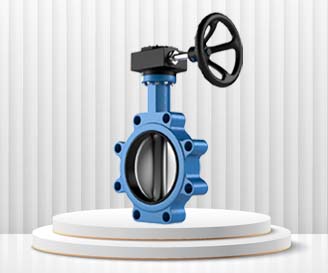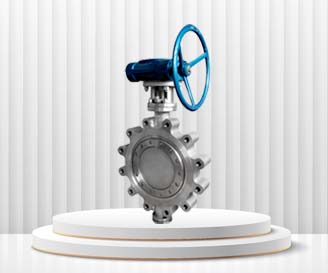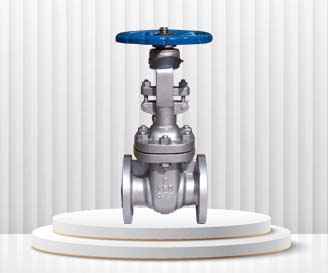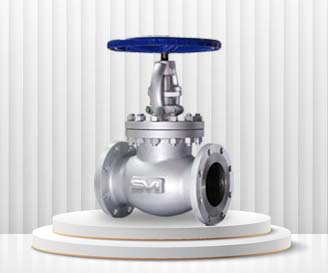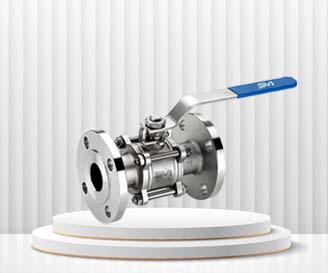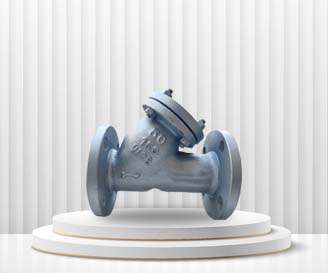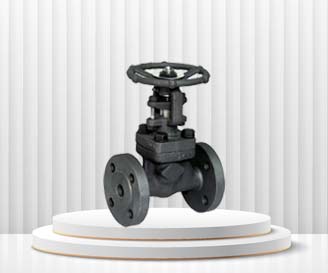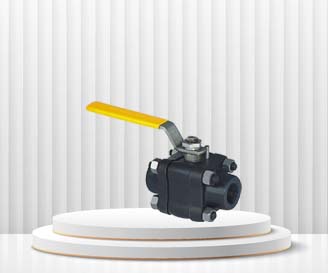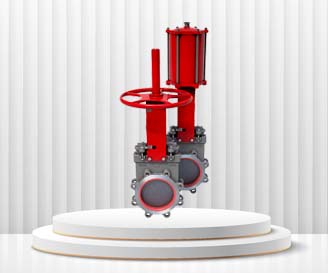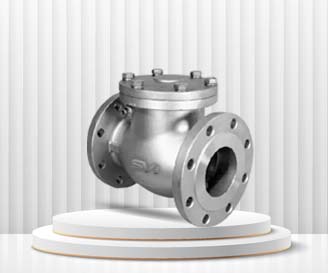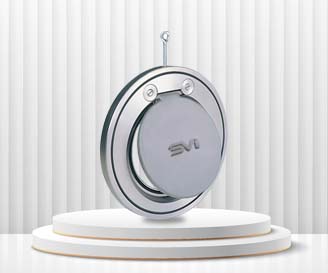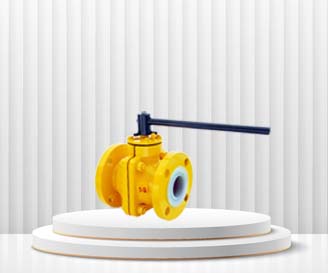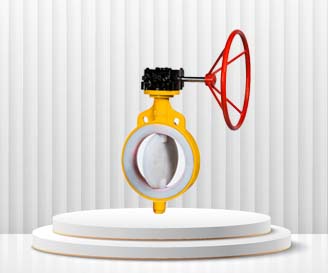
Butterfly Valve
because they cost less than other valve designs, and are lighter weight so they need less support. The disc is positioned in the center of the pipe. A rod passes through the disc to an actuator on the outside of the valve. Rotating the actuator turns the disc either parallel or perpendicular to the flow. Unlike a ball valve, the disc is always present within the flow, so it induces a pressure drop, even when open.
A butterfly valve is from a family of valves called quarterturn valves. In operation, the valve is fully open or closed when the disc is rotated a quarter turn. The “butterfly” is a metal disc mounted on a rod. When the valve is closed, the disc is turned so that it completely blocks off the passageway. When the valve is fully open, the disc is rotated a quarter turn so that it allows an almost unrestricted passage of the fluid. The valve may also be opened incrementally to throttle flow.
Wafer-Type Butterfly Valve
Wafer Type butterfly valve is designed to maintain a seal against bi-directional pressure differential to prevent any backflow in systems designed for unidirectional flow. It accomplishes this with a tightly fitting seal; i.e., gasket, o-ring, precision machined, and a lat valve face on the upstream and downstream sides of the valve.
Lug-Type Butterfly Valve
Lug Type butterfly-valve valves have threaded inserts at both sides of the valve body. This allows them to be installed into a system using two sets of bolts and no nuts. The valve is installed between two flanges using a separate set of bolts for each flange. This setup permits either side of the piping system to be disconnected without disturbing the other side.
SALIENT FEATURES OF BUTTERFLY VALVE
- The unique Center Line seat and disc design insures positive valve sealing while maintaining low seating torque.
- All Center Line Butterfly Valve discs are precision machined to a half ball profile, providing a precise disc to seat relationship
- Center Line’s cartridge style seat incorporates an elastomeric bonded to a phenol stabilizing ring, eliminating elastomeric movement and reducing seat tearing or fatiguing due to bunching.
- Center Line’s basic three bushing design completely isolates the valve shaft from the body, resulting in increased control of the valve disc, lower valve seating torque, and longer valve life.
- The Center Line cartridge seat has a much smaller mass of elastomeric than traditional boot seat designs, limiting seat swell and the accompanying variations in seating torque.
- Concentric butterfly valves – this type of valve has a resilient rubber seat with a metal disc.
Types of Butterfly Valve
Center Disc
Range
50 mm to 900 mm (2” To 36”)
Pressure Rating
PN 10 / PN 16
Technical Detail
Design & Manufacturer Standard:
BS 5155 / API 609 / BS EN 593 / AWWA C 504 / IS 13095
Testing & Inspection Standard:
EN 12266 Part-1 & Part-2
BS 6755 Part-1
API 598
Temp. Rating:
up to 180˚
BS 5155 / API 609 / BS EN 593 / AWWA C 504 / IS 13095
Testing & Inspection Standard:
EN 12266 Part-1 & Part-2
BS 6755 Part-1
API 598
Temp. Rating:
up to 180˚
End Connection type
Wafer End Connection
Flange End Connection
Lug Type End Connection
Flange End Connection
Lug Type End Connection
Operation Type
Gear Box Operated
Manual Handle Operated
Electrical Actuator Operated
Pneumatic Actuator & Cylinder Operated
Manual Handle Operated
Electrical Actuator Operated
Pneumatic Actuator & Cylinder Operated
Material of Constructions
Body Material:
Cast Iron / SG Iron / WCB / SS304 / SS316 / ASTM A 351 Gr. CF8 / ASTM A 351 Gr. CF8M
Disc Material:
Cast Iron / SG Iron / WCB / SS304 / SS316 / ASTM A 351 Gr. CF8 / ASTM A 351 Gr. CF8M
Seat Material:
NBR / NITRILE / EPDM / VITON / BUNA-N / SILICONE
Cast Iron / SG Iron / WCB / SS304 / SS316 / ASTM A 351 Gr. CF8 / ASTM A 351 Gr. CF8M
Disc Material:
Cast Iron / SG Iron / WCB / SS304 / SS316 / ASTM A 351 Gr. CF8 / ASTM A 351 Gr. CF8M
Seat Material:
NBR / NITRILE / EPDM / VITON / BUNA-N / SILICONE


